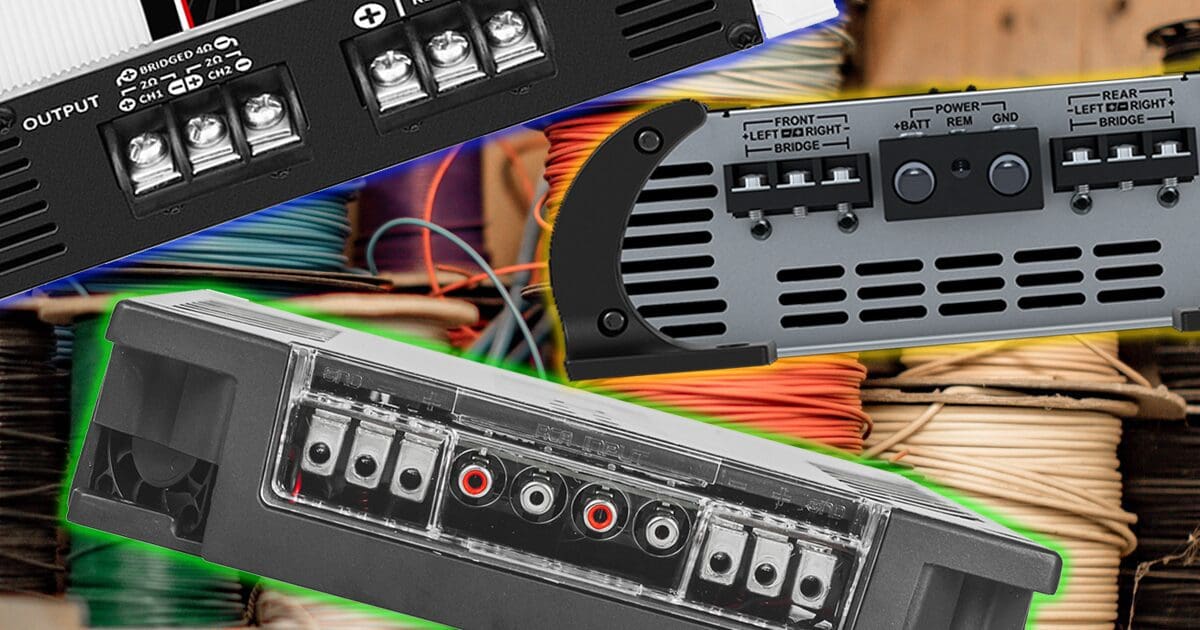Several car audio amplifiers on the market only have three terminals to which four speaker wires need to be connected. Typically, we are used to seeing a single terminal for each speaker’s positive and negative terminal – four in total. So, how do these three-terminal solutions work? The answer is simple if you know how the signal in the amp works. So, let’s take a look.
Amplifier Speaker Connections
In a typical stereo amplifier, there are a total of four terminals for the speaker wire connections – left negative, left positive, right negative and right positive. Connecting a pair of speakers to these terminals is very straightforward. One wire from each speaker terminal connects directly to the appropriate terminal on the amp.
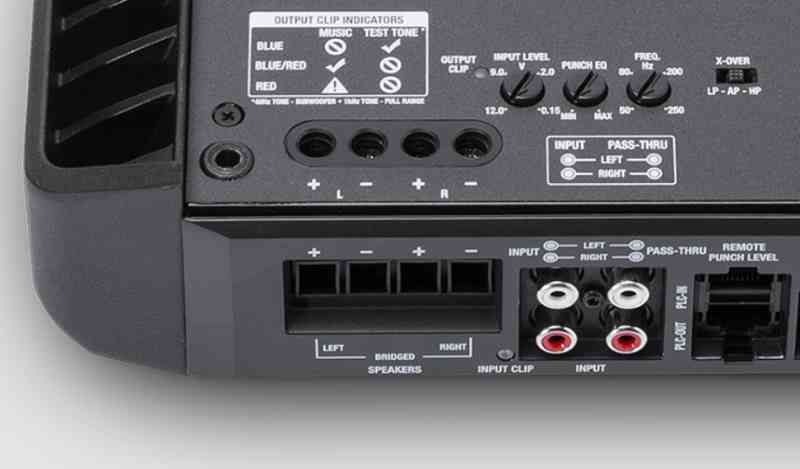
Inside the Rockford Fosgate P300X2, and in most high-quality stereo amplifiers, the left negative and right positive terminals are connected together.
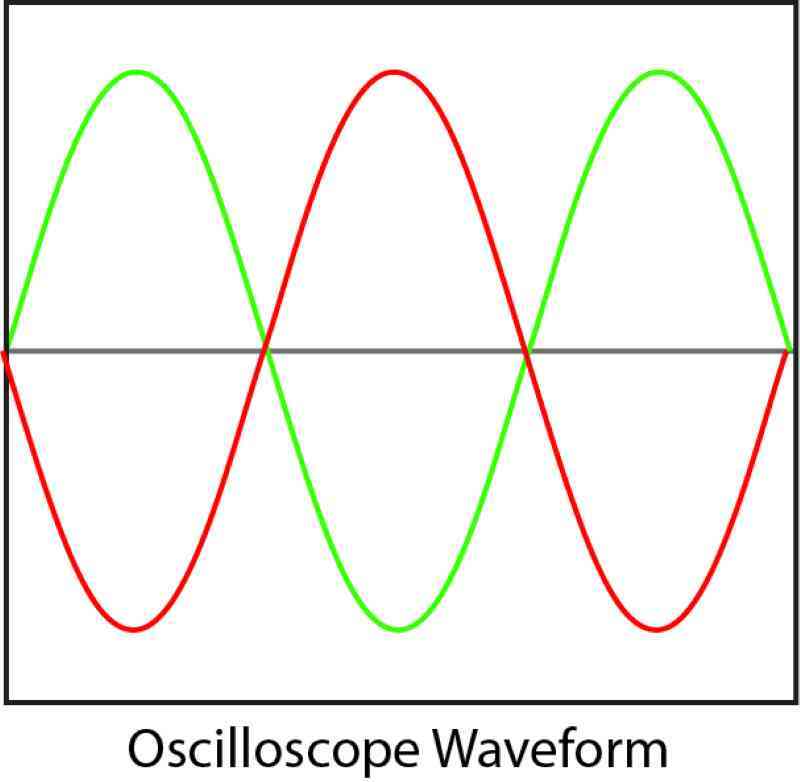
It’s clear that when the voltage moves more positive on one channel, it’s moving more negative on the other. Look at the waveforms and the terminals they are on. The speaker moves outward when the left positive output terminal has a positive voltage.
Here’s the trick, if you want to consider it that way. When the right negative speaker terminal has a negative signal, the speaker moves outward.
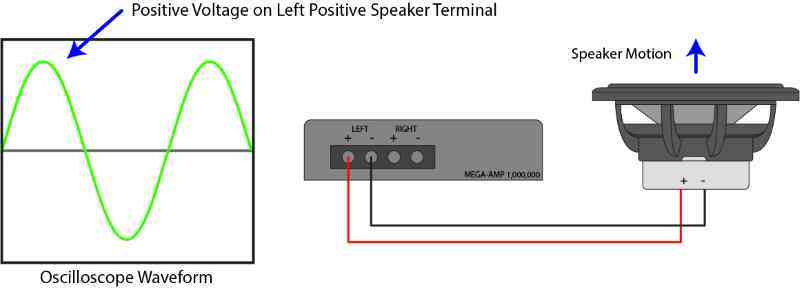
You might be asking, how does a negative voltage (relative to some reference level) make a speaker move outward? The answer is that the speaker’s positive terminal voltage is higher than the voltage on the negative terminal. So, the current flows through the coil in the same direction as the other speaker.
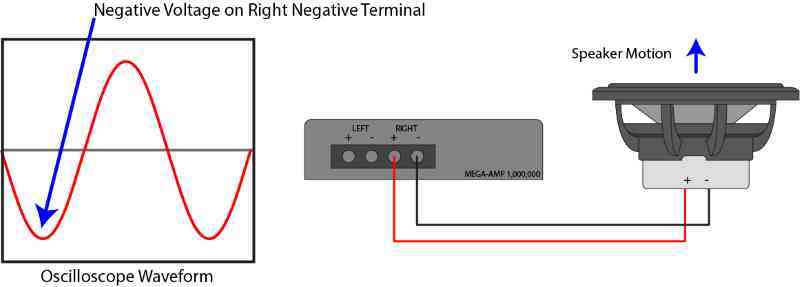
Since we’re dealing with alternating current, we’re only looking at the voltage in a specific instance in time, as the voltage swings back and forth from positive to negative hundreds or thousands of times a second.
Given that we’re looking at a split instance in time, let’s add a theoretical voltmeter to the drawings. This will help clarify how it’s working. Remember, the signal going to a speaker is AC, so it’s constantly changing; we’re looking at a split second in time for both speakers.
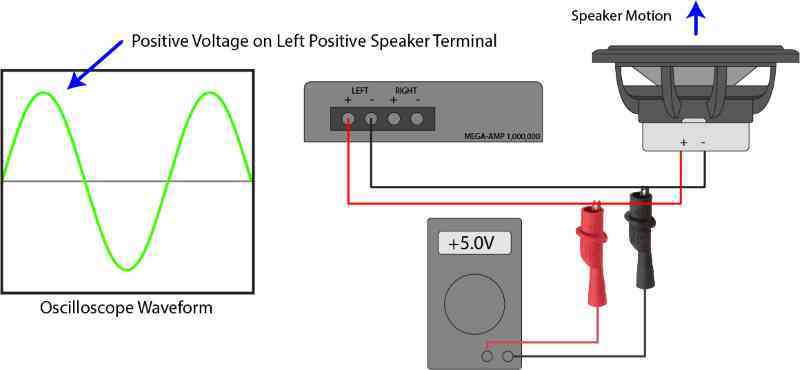
As you can see, the left positive terminal has a higher (more positive) voltage than the negative terminal.
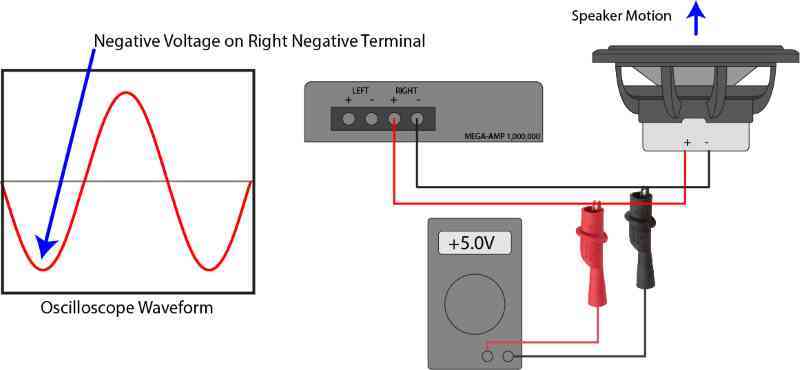
Here, the right positive terminal has a higher voltage than the negative terminal at the same instant in time. This is why the speaker cone moves outward.
Here’s the typical way speakers are connected to an amplifier, to wrap this up.

Amplifiers with Only Three Speaker Terminals
Since we know that the left negative and right positive terminals are both connected (and often to a ground reference) inside the amp, we can use either terminal for either connection. In the case of amplifiers with only three terminals for four speaker wires, the left negative wire and the right positive wire go to this common terminal. Sometimes the label on the terminal includes both positive and negative; sometimes, it’s labeled Common or Ground.

Why do these amplifiers have only three terminals? Most often, it’s to save space on the end panel of a small-chassis amplifier. It’s also possible that the manufacturer wanted to reduce the amp’s cost by using a three-position terminal instead of a four-position solution. Functionally, there’s no drawback, other than two wires need to go to the same connection on the amp. Your installer shouldn’t have any trouble with the installation.
It’s rare to find this type of amplifier for sale at a reputable specialty mobile enhancement retailer. That said, you can certainly ask whether they’re willing to install one for you. So drop by a local shop today to see how they can assist in upgrading your car stereo system.
